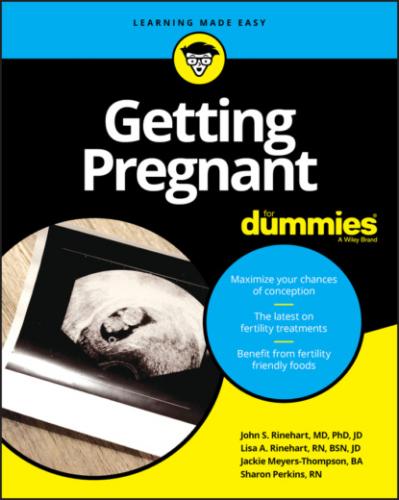Figuring Out How Often to Have Sex
When you’re trying to get pregnant, it is important to have intercourse every other day. It is a myth that you can have too much sex. Increased ejaculation may make the sperm count lower, but it does not decrease pregnancy rates. In fact, some men with low counts actually increase the amount of sperm they ejaculate with more frequent ejaculations.
When you’re close to ovulating, have sex at least every other day; every day is okay. Most doctors recommend the two days before and the day you ovulate as the best time for conception. Other than that, timing should remain routine so that there are no prolonged periods of abstinence. Infertility can severely decrease the joy of sex and the intimacy that usually accompanies intercourse. Don’t drive yourself crazy with things that don’t matter.
Chapter 3
Blame It on My Genes! The Role of Genetics and Family History
IN THIS CHAPTER
Nothing is more popular around the dinner table than crediting or blaming your family for who you are. You are so good at math — just like your dad. You sing like a dream — just like your mom. Always late like your Aunt Ellen! Grandma’s eyes, Grandpa’s hair, Aunt Susie’s wit, Uncle Bert’s moods … and your sister’s funny little toe can all be found in you, and it must be because of your genes. But how exactly do genes work, and why are they important if you are trying to have a baby?
Grasping Genetics Basics
Genetics has become a very popular word. With that popularity has come myth and misunderstanding. But the concept of the field of genetics is really quite simple. Genetics deals with the instruction manual on how to build a human. To be exact, a Google search gave the definition of genetics as “the study of heredity and the variation of inherited characteristics.”
What are genes and chromosomes?
Genes are a long string of four chemicals called nucleotides and lettered as A (adenine), C (cytosine), G (guanine), and T (thymine). Words in the code are made from just these four chemicals, and the alphabet has only four letters. That’s really a small alphabet to create a person. The English alphabet has 26 letters, and if you limit the number of syllables a word could have to 14, over 2.75963 x 107 words are possible. Fortunately for those spelling whizzes, the English language has only a little over 200,000 words.
The genetic code has only four letters, and the words (codons) can be only three letters long, so at most 64 possible combinations are used for the genetic code. The directions for building a human, the genetic code, is a string of three-letter words. However, the string is not one continuous string but rather 23 strings of code. These 23 separated strings are called chromosomes (see Figure 3-1). Each time a cell wants to divide, it must accurately create two copies of the genetic code, and it does this one word (codon) at a time.
To complicate this even further, a person inherits one set of chromosomes from each parent so that each cell has two copies of each chromosome. Thus, inheritance is a demanding task of accurately repeating the copying of the code over and over to create the 37 trillion or so cells that make a human.
What do genes do?
Genes are used to direct a cell to make proteins. Proteins are strings of molecules called amino acids, and there are 20 that are used to make proteins. Proteins are the workhorse of constructing a human. The DNA uses a different type of genetic material called RNA to assemble proteins from the amino acids. Each gene determines which amino acids are to be used and in what sequence. The way in which the amino acids are strung together determines the three-dimensional structure of the protein.
FIGURE 3-1: Diagram of a chromosome.
Inheriting Infertility — Really?
The construction of a human is immensely complicated. For proper functioning, all of the various parts need to work together. Any part that does not do its job properly can throw the person out of balance and thus create disease. So normal human functioning means that the systems are in equilibrium and working properly together. Any part not functioning in equilibrium causes the disease. The genetic code determines the basis for the equilibrium; any error in the code can cause the person’s equilibrium to be disturbed, and disease follows. For people having problems conceiving, a question that needs to be answered is whether errors in the genetic code are causing the problem of getting pregnant.
